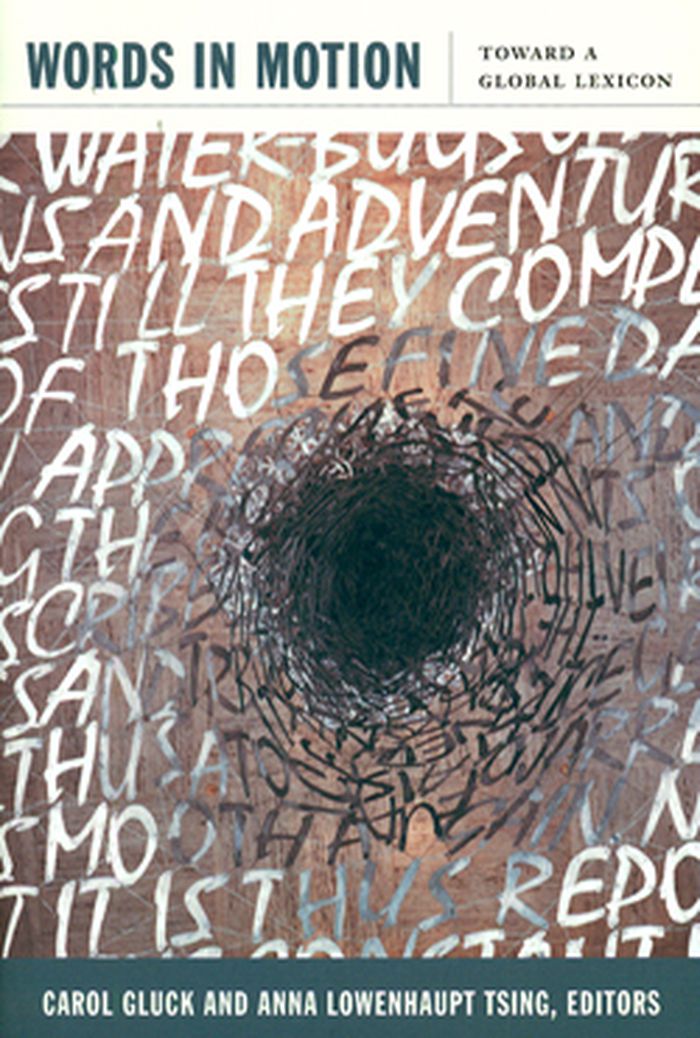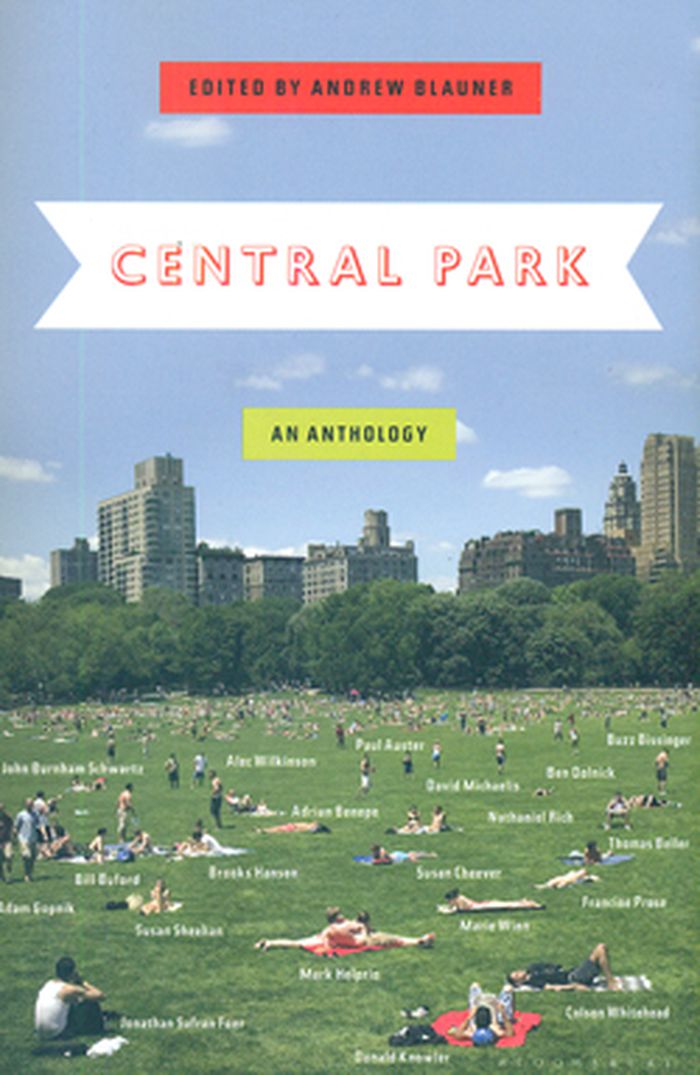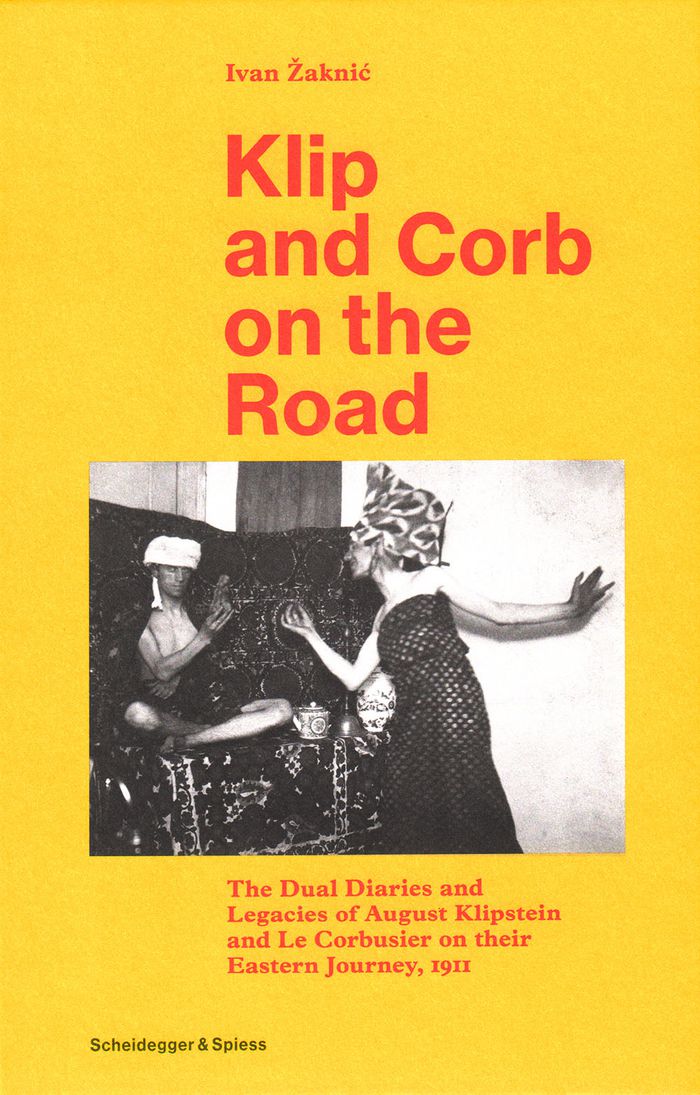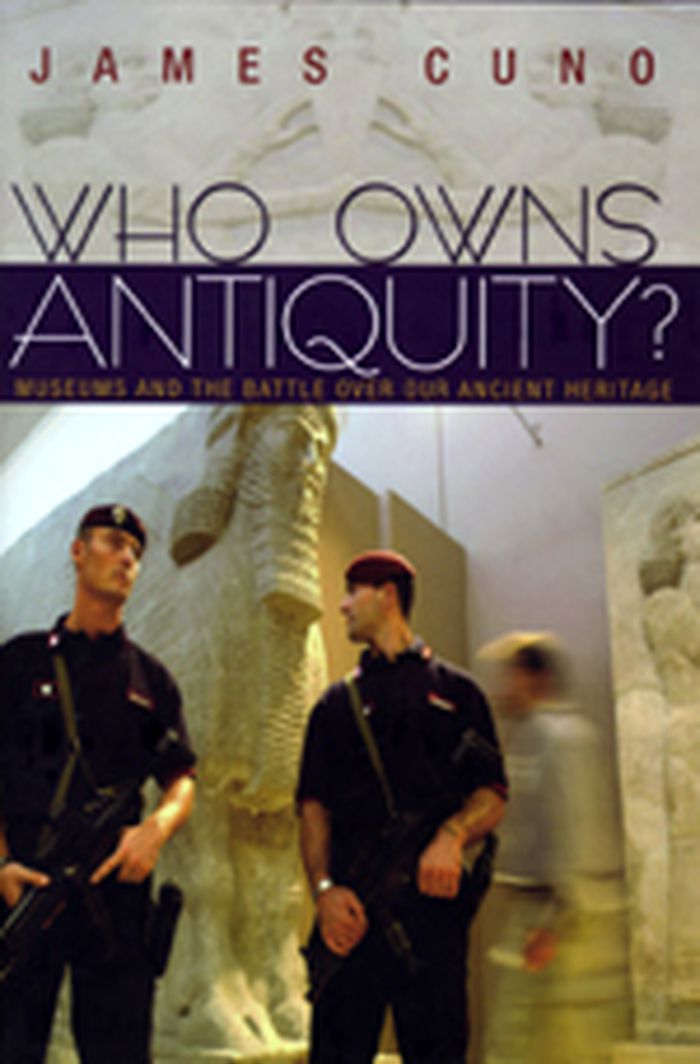livres
Description:
xv, 448 pages : illustrations (some color) ; 26 cm
New Haven : Yale University Press, ©2007.
The ceremonial city : history, memory and myth in renaissance Venice / Iain Fenlon.
Actions:
Exemplaires:
Description:
xv, 448 pages : illustrations (some color) ; 26 cm
livres
New Haven : Yale University Press, ©2007.
$31.95
(disponible sur commande)
Résumé:
On the premise that words have the power to make worlds, each essay in this book follows a word as it travels around the globe and across time. Scholars from five disciplines address thirteen societies to highlight the social and political life of words in Asia, Europe, and the Middle East, from the mid-nineteenth century to the present. The approach is consciously(...)
Théorie de l’architecture
décembre 2009
Words in motion: toward a global lexicon
Actions:
Prix:
$31.95
(disponible sur commande)
Résumé:
On the premise that words have the power to make worlds, each essay in this book follows a word as it travels around the globe and across time. Scholars from five disciplines address thirteen societies to highlight the social and political life of words in Asia, Europe, and the Middle East, from the mid-nineteenth century to the present. The approach is consciously experimental, in that rigorously tracking a specific word in specific settings frequently leads in unexpected directions and alters conventional depictions of global modernity. Such words as security in Brazil, responsibility in Japan, community in Thailand, and hijb in France changed the societies in which they moved even as they were changed by them. Some words threatened to launch wars, as injury did in imperial Britain's relations with China in the nineteenth century. Others, such as secularism, worked in silence to agitate for political change in twentieth-century Morocco. Words imposed or imported from outside could be transformed by those who wielded them to oppose the very powers that introduced them, as happened in Turkey, Indonesia, and the Philippines. Taken together, this selection of fourteen words reveals commonality as well as distinctiveness in modern societies, making the world look different from the interdisciplinary and transnational perspective of "words in motion."
Théorie de l’architecture
Central park : an anthology
$18.00
(disponible sur commande)
Résumé:
In a city where people can live sixty-three thousand to a square mile, Central Park is an escape, adventure, meditation, memory, and amusement, and this anthology, comprising the work of some of New York's literary luminaries, is a charming 21-essay tribute to what is probably the most closely watched and monitored 843 acres on Earth. Marie Winn pens a funny letter to(...)
Central park : an anthology
Actions:
Prix:
$18.00
(disponible sur commande)
Résumé:
In a city where people can live sixty-three thousand to a square mile, Central Park is an escape, adventure, meditation, memory, and amusement, and this anthology, comprising the work of some of New York's literary luminaries, is a charming 21-essay tribute to what is probably the most closely watched and monitored 843 acres on Earth. Marie Winn pens a funny letter to Holden Caulfield about what happens to the park's ducks in winter; Bill Buford tries sleeping there one night; and Nathaniel Rich gives the sentimental history of an annual Thanksgiving touch-football game (the "Turkey-Lurkey Bowl"). Othersa Susan Cheever, Colson Whitehead, Adam Gopnik, and Paul Auster among thema fish for carp, run past Jackie Kennedy, befriend goats at the zoo, and explore the place "where nature is so beautifully and spectacularly kept on a leash." But it wasn't always so: the masterpiece of Frederick Law Olmstead and Calvert Vaux was, at times, a "municipal embarrassment," the site of muggings, murders, anda rumor had ita "a nightmarish water fountain that dribbled raw sewage into the mouths of toddlers." It's clear, by the collection's range, that there must be at least as many Central Parks as there are annual visitors and that's close to 40 million.
Théorie de l’architecture
livres
Description:
171 pages : illustrations, plans ; 21 cm
London : Bedford Press, ©2013.
Ahali : an anthology for setting a setting / [edited by Can Altay].
Actions:
Exemplaires:
Description:
171 pages : illustrations, plans ; 21 cm
livres
London : Bedford Press, ©2013.
livres
The arts of the Mamluks in Egypt and Syria : evolution and impact / Doris Behrens-Abouseif (ed.).
Description:
351 pages : illustrations (chiefly color), maps ; 25 cm.
Goettingen : V & R unipress : Bonn University Press, ©2012.
The arts of the Mamluks in Egypt and Syria : evolution and impact / Doris Behrens-Abouseif (ed.).
Actions:
Exemplaires:
Description:
351 pages : illustrations (chiefly color), maps ; 25 cm.
livres
Goettingen : V & R unipress : Bonn University Press, ©2012.
livres
Description:
xv, 274 pages : illustrations ; 24 cm
London : Bloomsbury, 2015.
Oriental interiors : design, identity, space / edited by John Potvin.
Actions:
Exemplaires:
Description:
xv, 274 pages : illustrations ; 24 cm
livres
London : Bloomsbury, 2015.
livres
$82.50
(disponible sur commande)
Résumé:
Room 4.1.3, an Australian landscape architecture firm, is renowned for producing some of the world's most finely tuned design work, striking a balance between theory and praxis, design and planning. The firm's projects engage visitors in a way that few public spaces have before. Founded in the 1990s by Richard Weller and Vladimir Sitta, Room 4.1.3 has received awards in(...)
Room 4.1.3 : innovations in landscape architecture
Actions:
Prix:
$82.50
(disponible sur commande)
Résumé:
Room 4.1.3, an Australian landscape architecture firm, is renowned for producing some of the world's most finely tuned design work, striking a balance between theory and praxis, design and planning. The firm's projects engage visitors in a way that few public spaces have before. Founded in the 1990s by Richard Weller and Vladimir Sitta, Room 4.1.3 has received awards in more than forty open design competitions and is currently at work on a new city in Singapore, "fusion-polis." Adopting a new proscriptive approach, the designs exhibit a strong theoretical base that extends into cultural studies, art, geography, anthropology, and psychology. For example, the controversial Garden of Australian Dreams at the National Museum of Australia in Canberra is a veritable playground of meanings, invoking events of such varying cultural significance as the birth of Australia as a nation and the work of Jackson Pollock. This lavishly illustrated volume features many other award-winning Room 4.1.3 designs, including Namesti Miru in Prague, Potsdamer Platz in Berlin, and Gallipoli Peace Park in Turkey. Internationally renowned scholars and critics provide essays that contextualize each project and ultimately argue for the primacy and efficacy of poetic and subversive imagination in the formation of our environment. The works collected here, both built and unbuilt, will introduce Room 4.1.3's iconic style to an ever-widening audience in North America and open up an international discourse on new meanings of landscape architecture.
livres
janvier 2005, Philadelphia
Jardins
$77.95
(disponible sur commande)
Résumé:
In 1911, Le Corbusier (1887–1965), then twenty-four and still going by the name of Charles-Edouard Jeanneret, embarked on a grand tour of Eastern Europe, Turkey, and the Balkans with his friend, August Klipstein (1885–1951), an art history scholar. Together, the two visited Prague, Vienna, Budapest, Bulgaria and Serbia, Constantinople, Mount Athos, and Athens, as well as(...)
Klip and Corb on the road: the dual diaries of August Klipstein and Le Corbusier, 1911
Actions:
Prix:
$77.95
(disponible sur commande)
Résumé:
In 1911, Le Corbusier (1887–1965), then twenty-four and still going by the name of Charles-Edouard Jeanneret, embarked on a grand tour of Eastern Europe, Turkey, and the Balkans with his friend, August Klipstein (1885–1951), an art history scholar. Together, the two visited Prague, Vienna, Budapest, Bulgaria and Serbia, Constantinople, Mount Athos, and Athens, as well as Rome and Pompeii. Both young men kept detailed notebooks throughout their journey with drawings, sketches, and photographs created en route. While Le Corbusier’s notebooks were published in 1966 as “Journey to the East” and went on to attain wide renown, Klipstein’s records of their travels have remained relatively unknown. In “Klip and Corb on the Road”, Ivan Žaknic´ brings the notebooks together for the first time to explore the fruitful creative symbiosis of this friendship and offer a new perspective on this seemingly well-known undertaking. The two men sometimes address the same events or subjects—a seasick passage, the bustle of a Turkish bazaar—and even copy one another’s work. But while Klipstein’s reflections tend to focus on research for his thesis, Jeanneret’s impressions evince a more romantic mindset inspired by his immediate surroundings. The book includes copious previously unpublished material, including the complete text of Klipstein’s diary, as well as that of the correspondence between Jeanneret and Klipstein. Reintroducing readers to Klipstein, who went on to a career as a prominent art dealer, it also offers insight into a key influence in the artistic development of Le Corbusier in his formative years. The book also includes an essay by British architectural historian Tim Benton.
Architecture, monographies
$75.00
(disponible sur commande)
Résumé:
This large-format monograph is the first to chronicle exclusively Shigeru Ban’s explorations in "paper architecture." Informed by a thorough and early interest in sustainable forms, his innovative practice pioneered the use of paper as a structural element in buildings. This book features permanent and temporary structures, ranging from one-off museums and exhibition(...)
Shigeru Ban: paper in architecture
Actions:
Prix:
$75.00
(disponible sur commande)
Résumé:
This large-format monograph is the first to chronicle exclusively Shigeru Ban’s explorations in "paper architecture." Informed by a thorough and early interest in sustainable forms, his innovative practice pioneered the use of paper as a structural element in buildings. This book features permanent and temporary structures, ranging from one-off museums and exhibition spaces to emergency structures for communities displaced by natural and man-made catastrophes. The forty projects featured in the book showcase the variety of possible applications for paper and its derivative forms (cardboard, fiber-based composites). As flexible as it is adaptable, when used in tandem with other locally sourced building materials or post-industrial surplus (maritime shipping containers), Ban’s singular use of paper knowingly references paper’s traditional uses in vernacular Japanese buildings, and advances modern construction technology, reducing its environmental impact. A number of prominent works from the last decade are featured, including the Nomadic Museums built in New York, Los Angeles, and Tokyo, his work for the Centre Pompidou in Paris and Metz, the Papertainer Museum in Seoul, his pavilions for design and luxury brands like Louis Vuitton and Artek, as well as a number of landmark residences in Japan, Europe, and North America. Of particular focus will be Ban’s humanitarian work. Documented in a book for the first time are all the relief projects his studio has undertaken in the last two decades for the U.N. High Commission on Refugees. These include housing for tsunami victims in Sri Lanka and earthquake victims in Turkey and Japan, and emergency shelter for war-ravaged communities in Rwanda and the Congo.
Architecture, monographies
Who owns antiquity?
$24.95
(disponible sur commande)
Résumé:
Whether antiquities should be returned to the countries where they were found is one of the most urgent and controversial issues in the art world today, and it has pitted museums, private collectors, and dealers against source countries, archaeologists, and academics. Maintaining that the acquisition of undocumented antiquities by museums encourages the looting of(...)
Who owns antiquity?
Actions:
Prix:
$24.95
(disponible sur commande)
Résumé:
Whether antiquities should be returned to the countries where they were found is one of the most urgent and controversial issues in the art world today, and it has pitted museums, private collectors, and dealers against source countries, archaeologists, and academics. Maintaining that the acquisition of undocumented antiquities by museums encourages the looting of archaeological sites, countries such as Italy, Greece, Egypt, Turkey, and China have claimed ancient artifacts as state property, called for their return from museums around the world, and passed laws against their future export. But in Who Owns Antiquity?, one of the world's leading museum directors vigorously challenges this nationalistic position, arguing that it is damaging and often disingenuous. "Antiquities," James Cuno argues, "are the cultural property of all humankind," "evidence of the world's ancient past and not that of a particular modern nation. They comprise antiquity, and antiquity knows no borders." Cuno argues that nationalistic retention and reclamation policies impede common access to this common heritage and encourage a dubious and dangerous politicization of antiquities--and of culture itself. Antiquities need to be protected from looting but also from nationalistic identity politics. To do this, Cuno calls for measures to broaden rather than restrict international access to antiquities. He advocates restoration of the system under which source countries would share newly discovered artifacts in exchange for archaeological help, and he argues that museums should again be allowed reasonable ways to acquire undocumented antiquities. The first extended defense of the side of museums in the struggle over antiquities, Who Owns Antiquity? is sure to be as important as it is controversial.
Muséologie




